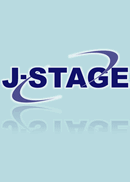Volume 61, Issue 2
Displaying 1-14 of 14 articles from this issue
- |<
- <
- 1
- >
- >|
-
Article type: Cover
2010 Volume 61 Issue 2 Pages Cover3-
Published: June 15, 2010
Released on J-STAGE: November 01, 2017
Download PDF (12956K) -
Article type: Cover
2010 Volume 61 Issue 2 Pages Cover4-
Published: June 15, 2010
Released on J-STAGE: November 01, 2017
Download PDF (12956K) -
Article type: Index
2010 Volume 61 Issue 2 Pages Toc2-
Published: June 15, 2010
Released on J-STAGE: November 01, 2017
Download PDF (38K) -
Article type: Article
2010 Volume 61 Issue 2 Pages 31-45
Published: June 15, 2010
Released on J-STAGE: November 01, 2017
Download PDF (2102K) -
Article type: Article
2010 Volume 61 Issue 2 Pages 46-53
Published: June 15, 2010
Released on J-STAGE: November 01, 2017
Download PDF (971K) -
Article type: Article
2010 Volume 61 Issue 2 Pages 54-64
Published: June 15, 2010
Released on J-STAGE: November 01, 2017
Download PDF (1397K) -
Article type: Article
2010 Volume 61 Issue 2 Pages 65-75
Published: June 15, 2010
Released on J-STAGE: November 01, 2017
Download PDF (1230K) -
Article type: Article
2010 Volume 61 Issue 2 Pages 76-84
Published: June 15, 2010
Released on J-STAGE: November 01, 2017
Download PDF (1126K) -
Article type: Appendix
2010 Volume 61 Issue 2 Pages App7-
Published: June 15, 2010
Released on J-STAGE: November 01, 2017
Download PDF (47K) -
Article type: Appendix
2010 Volume 61 Issue 2 Pages App8-
Published: June 15, 2010
Released on J-STAGE: November 01, 2017
Download PDF (47K) -
Article type: Appendix
2010 Volume 61 Issue 2 Pages App9-
Published: June 15, 2010
Released on J-STAGE: November 01, 2017
Download PDF (76K) -
Article type: Appendix
2010 Volume 61 Issue 2 Pages App10-
Published: June 15, 2010
Released on J-STAGE: November 01, 2017
Download PDF (76K) -
Article type: Appendix
2010 Volume 61 Issue 2 Pages App11-
Published: June 15, 2010
Released on J-STAGE: November 01, 2017
Download PDF (76K) -
Article type: Appendix
2010 Volume 61 Issue 2 Pages App12-
Published: June 15, 2010
Released on J-STAGE: November 01, 2017
Download PDF (76K)
- |<
- <
- 1
- >
- >|
